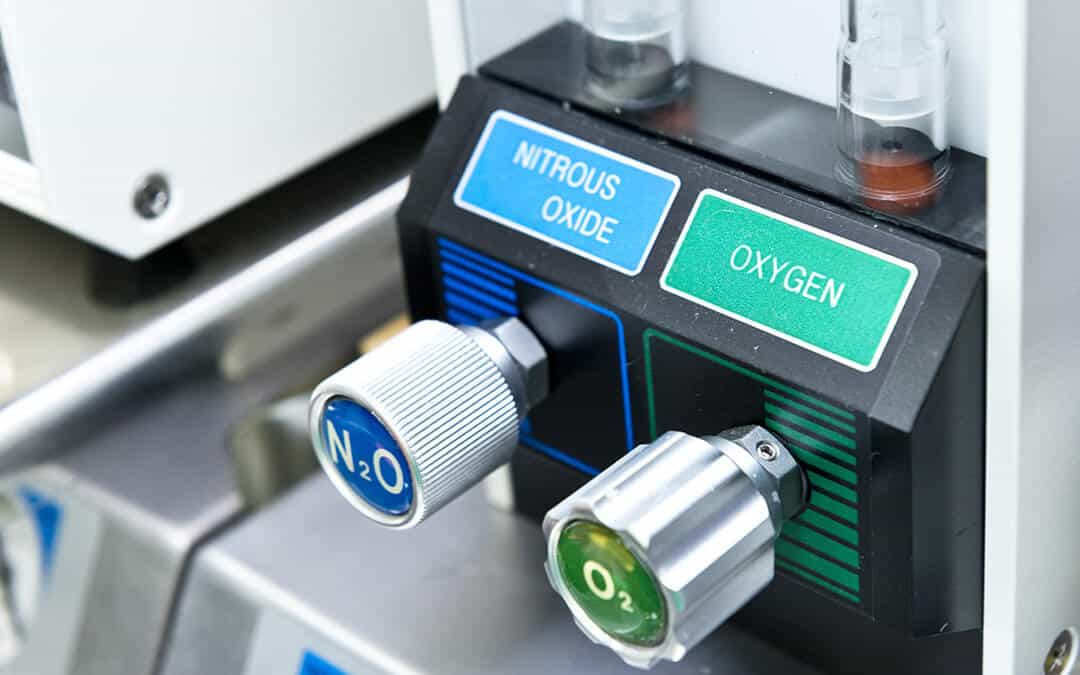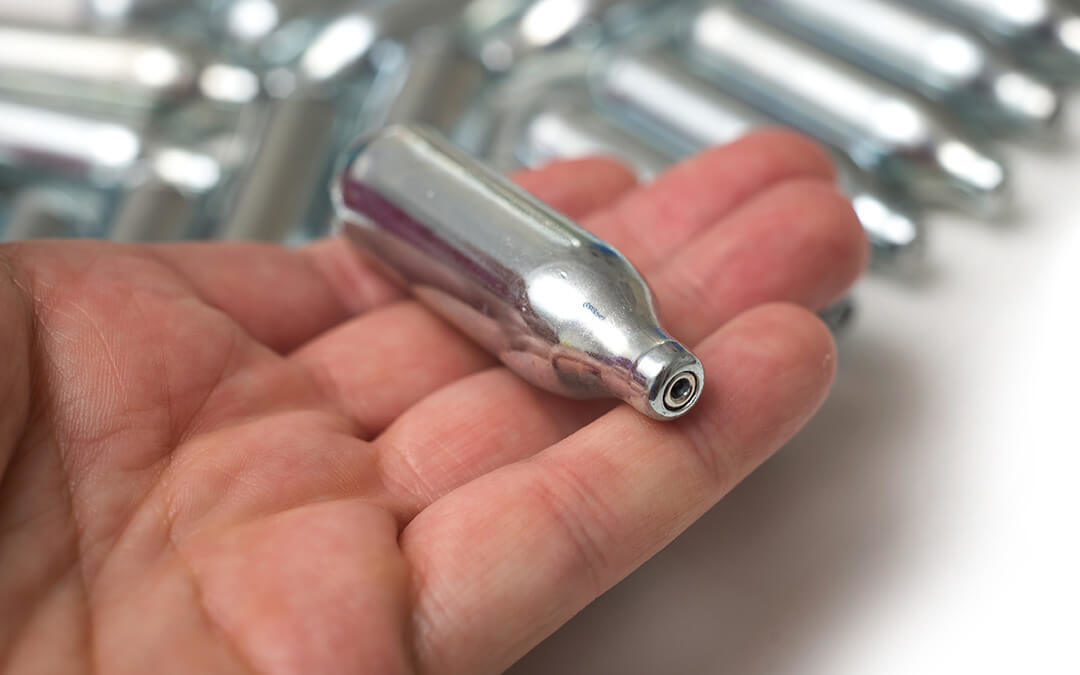When inhaled, the gaseous combination of nitrous oxide and oxygen acts as an anesthetic and analgesic during medical and dental procedures – such as oral surgery – as well as during childbirth and trauma treatment. The medical use of nitrous oxide-oxygen in anesthesia, also known as conscious sedation, has been in practice for almost 200 years.
The controlled inhalation of nitrous oxide blended with oxygen – in a 2:1 ratio of nitrous oxide to oxygen – produces temporary anesthesia before and during surgical operations. Nitrous oxide-oxygen both calms nerves and reduces physical discomfort – and should be administered only by a medical professional. Inhaled by itself, nitrous oxide can cause asphyxiation, leading to respiratory failure, unconsciousness, or even death. Oxygen is always mixed in with medically administered nitrous, to prevent oxygen deprivation and blood pressure loss during anesthetization.

To Reduce Pain & Anxiety
In dental practice, nitrous oxide-oxygen is widely used to reduce the pain and anxiety associated with common oral procedures. Upon administration by a dentist or other medical professional, nitrous oxide-oxygen sedates the patient, while decreasing their pain sensitivity. In some cases, the administered dose is low enough for the patient to remain awake, yet relaxed, during the procedure. At higher doses, the patient may enter induced twilight – without losing consciousness.
Once inhaled, nitrous oxide-oxygen is absorbed into the bloodstream, where it travels to the brain, causing anesthetization. Higher concentrations of inhaled nitrous oxide-oxygen can produce euphoric sensations. This is why nitrous oxide is also called laughing gas. Taken recreationally, nitrous whippets – so called because of nitrous oxide’s common use in pressurized whipped cream containers – induce dissociative feelings, thus producing laughter.
British chemist Humphry Davy first coined the term “laughing gas” at the turn of the 19th century, having discovered firsthand how inhaled nitrous oxide causes euphoria and laughter. Davy went on to write about nitrous oxide’s pain-relieving potential during surgery – influencing its eventual widespread adoption as a surgical anesthetic.
Nitrous oxide’s recreational use as a dissociative anesthetic came later, and is not medically endorsed or sanctioned. Though not a controlled substance, nitrous oxide should only be administered under medical supervision.

Fast Acting & Effective
Typically administered via nasal hood or face mask, nitrous oxide-oxygen is fast acting, taking effect after a few breaths. After inhalation and absorption through the lungs, the calming psychoactive effects set in. In general anesthesia, because of its limited analgesic properties, nitrous oxide is often used as a carrier gas for chemicals with stronger painkilling effects.
Nitrous oxide-oxygen sedation alone doesn’t always have the painkilling strength or numbing properties necessary for maintaining patient comfort during a medical procedure. Starting the anesthesia with nitrous oxide-oxygen, however, helps ease the patient onto stronger analgesics.
A Trusted Anesthetic
Inhaled nitrous oxide-oxygen is used worldwide as a reliable anesthetic, reducing pain and anxiety in humans and animals before and during medical procedures.
Contact CalOx today about nitrous oxide for your dental, medical, and veterinary practice. We also provide training on proper care, storage, and maintenance of the equipment. Contact us to learn more.
